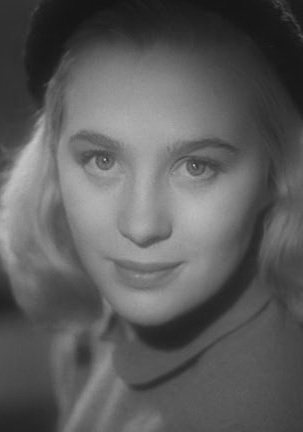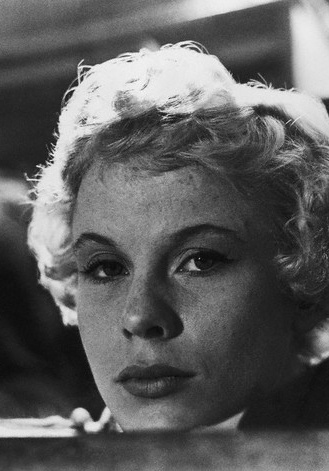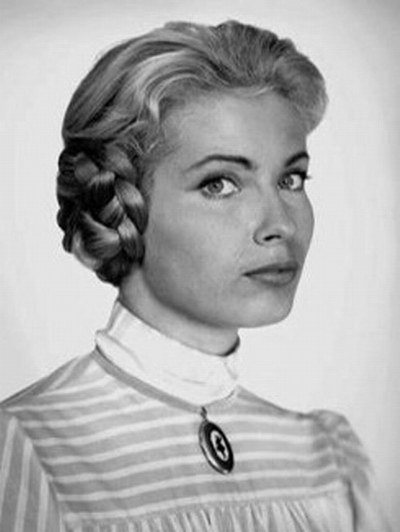女伶们 Flickorna(1968)

又名: 女孩 / The Girls
导演: 梅·扎特林
编剧: 梅·扎特林 David Hughes
主演: 毕比·安德松 哈里特·安德森 古内尔·林德布洛姆 古纳尔·布约恩施特兰德 厄兰·约瑟夫森 弗兰克·松德斯特伦 奥克·林德斯特伦 Stig Engström 玛格丽特·韦弗斯 莱夫·利耶罗特 乌尔夫·帕姆 英瓦尔·谢尔松 Signe Enwall Bellan Roos Chris Wahlström
制片国家/地区: 瑞典
上映日期: 1968-09-16(瑞典)
片长: 100分钟 IMDb: tt0062981 豆瓣评分:8 下载地址:迅雷下载
简介:
- 女演员丽兹、玛丽娅纳和古尼拉在排练古希腊戏剧《里斯特拉塔》时,通过剧中人物的遭遇不由自主地联想到她们个人生活。这种联想使她们开始反思自己与丈夫的关系以及对男性的看法。丽兹的丈夫是一位粗鲁的股票经纪人,他要求丽兹离开舞台,留在家里。这反映了丽兹在事业和家庭之间的冲突,以及她对于丈夫的期望和对自己的追求之间的困扰。
演员:
影评:
可以说是我近期看过最好的女性电影,也是女导演放入一部佳作——上一个是时时刻刻。
这部电影的形式也很新颖,算是戏剧融合生活的典型,不算戏中戏,但女性角色的生活和她们正表演的戏剧有着千丝万缕的联系。开头有一个场景是两个男人在看女主演们的巡演前采访录,那时的女孩们显得很彷徨,就是我曾经在椒麻堂会里看到的那些隐约觉察自己的困境的劳动女性的类型,她们摸到了天花板,摸到了不断逼近的墙。不同的是,女伶们选择了反抗,而不是像椒麻堂会里的劳动女性们那样打着毛衣纳着鞋底就去做饭了。男人们在此时对女性的评价是无知的家庭主妇,且不屑一顾。
紧接着画面从舞台排练移开,进入主角的日常生活,但戏剧的台词仍在继续,伴随着女人们彷徨迷茫的目光。紧接着,现实和戏剧的交融反复以这样的形式呈现,再穿插巡演中舞台剧的段落,方式是新颖的,但由于这个字幕只有英文的,讲的又是瑞典语,看得我有点费劲儿。
三个女人面临的不同困境都被展现出来。最初是和一个已婚医生同居还生了一个儿子的玛丽亚纳,在瑞典的雪地里,她被医生追逐着,交汇的舞台剧正是利斯特(名字太长了我简写)带头宣誓要对男性进行冷处理以表达自己对男性主权的不满,舞台上的玛丽亚纳便没有跟随大队宣誓,而雪地追逐中的她也显得犹豫,最后他们滚到了一家家具店里头在看床,随着店员解说,在很多人的围观下滚过一个个床,举止也愈发亲密,这和后面玛丽亚纳在戏剧中饰演的角色色诱男性掌权者以让他答应签订条约的情节呼应,那个地方玛丽亚纳一边推阻一边迎合,也是在搬运家具进来的员工面前极尽诱惑之态。
古尼拉的两个场景,一个是买东西被很多小孩围观和追逐,另一个是她走在森林里看到一个满身是伤的小孩,可是她寻找求救的男人只是敷衍地帮了帮忙,这都对应了她对家里五个孩子的疲倦和她那丧偶式育儿的丈夫的不作为。最后丈夫车站迎接她的场景以丈夫强迫她趴下来打击她的屁股而结束。
到此我感觉得到,这上面两个角色的行为都是臆想空间的,区别于利兹4是真实发生的,她最终脱离了她那粗暴无礼的丈夫,昂首地单方面宣布离婚。
电影中有两个高潮情节对应,当利兹在台上发出言论渴望唤醒观众后,出现一个酒吧的场景,她妩媚地跳着脱衣舞,每一个男士都虎视眈眈地盯着她,直到她脱完了,赤裸站在众人面前,她的丈夫才把她认出来并且大喊,这是我的妻子啊,她到底在干什么?
真讽刺,男人居然只注意了脖子以下的部位和女人的体态风姿。
紧接着无数女性出现,或胖或瘦,或年迈或年轻,都撕开自己的衣服,赤裸于男人眼前,目光如炬,炯炯有神。男人们居然害怕地低了头。
与之对应的是男性抬着一具女性尸体进入法庭,高声贬斥女性是愚蠢、懦弱、无理取闹、不劳而获、目光短浅的物种,并称当务之急就是防止她们学习和思考,并鼓励男性做自己一切想做的事情——殴打、谩骂、污蔑、看轻女性。法庭陷入狂热,男性们一致拥护。
而后面三个女性之一在做宣讲时,却有女性因为意见不合而开始互相扭打。
那一刻我信了古尼拉说的话——女人确实如男人所说,猜忌、懦弱、斤斤计较,不像男人,为了共同的邪恶目标可以同仇敌忾。不过女人有一个最大的特点——诚实。
而最愚蠢和最讽刺的是,她们试图教会男人诚实,并认为巡演以后的改变就是男人确实一无是处,但他们确实认识到自己一无是处了,这就是诚实的改变,然而看着女孩们发表这样观点的男性管理层却说——女人嘛,我从来不信她们说的鬼话。
我想,不仅仅在2023年,未来的二十年内,中国都拍不出这样一部在瑞典拍摄于1963年的电影,且导演为女性。
作业英文写的,实在没时间翻译了,有关两个电影的比较就试着两边都发一遍。
Destruction and Reflection in Objectification: Feminist Allegory in Daisies/ Sedmirkrásky and The Girls/ Flickorna
In the male-dominated film industry, it is rare to see films made from the perspective of women. Thornburg complains that traditionally most media have provided limited role models for women and that most films objectify women and define them in terms of their relationship to men. With the onset of second-wave feminism in the early 1960s in the west, more women got involved in the film industry as filmmakers and more films were produced from a feminist point of view. Examples of such films include Daisies and The Girls, which are both directed by and use women as protagonists. These films successfully broke down stereotypical portrayals of women in film and have presented women’s reflection on their condition under patriarchal society. Daisies is directed by Věra Chytilová, a preeminent member of the Czech New Wave film movement. This film can be interpreted in a number of ways and can also be considered as a feminist allegory which reconstructs the doll metaphor as the celebration of the female recalcitrance rather than the apparent condemnation of its heroines. The Girls, which is more recognisable of its director - Mai Zetterling’s political commitment, inserts an ancient Greek comedy - Lysistrata as a feminist allegory to reveal the heroines’ reflection on their own lives. Focusing on the central notion in feminism - objectification, this study will explore the feminist values presented to the viewer in Daisies and The Girls. This will be achieved by carefully comparing and analysing filmic elements and techniques used in both of these films.
Before we begin to analyse their respective film works, it is valuable to look at these female filmmakers’ authorship approaches first. Although Chytilová and Zetterling are both from Europe, they came from opposing parts of Europe divided by the so called “Iron Curtain” for much of the 20th century, leading to distinct cultural differences in their work. As one of the most innovative filmmakers in 1960s, Chytilová’s work is characterised by surrealism, grotesque satire and absurdism. She is very creative in her methods through which she utilises avant-garde and experimental techniques to establish her own unique film style. For a brief period the work she produced was critical of communism, due to the de-Stalinization policy of the Czech government in the early 1960s, a short-lived period of artistic freedom in the country. Her early career as a fashion model may also have influenced Daisies. Zetterling is perhaps better known in the west for her acting than for her directing, yet she has created a new image of women in film which has embodied the potential of filmmaking by women. Her filmmaking style is deeply influenced by the Swedish Ingmar Bergman, who has achieved worldwide notoriety as a director. He has directed several films and TV series that focus on women and marriage such as Persona and Scenes from a Marriage/Scener ur ett äktenskap which are in the same vein as The Girls. Some of the actors from The Girls also star in some Bergman’s other films. Therefore, it is necessary to consider the influence of Bergman when analysing The Girls by Zetterling.
Differences in film elements and techniques set apart the contrasting styles of Daisies and The Girls. When analysing the respective films’ cinematography, it is apparent that the change of colour in Daisies and The Girls sets essential differences in their film’s tone. The differences are not just confined to the fact that Daisies is cine-colour and The Girls is in black and white. Daisies has manifest colour change from filters change and colour effect. The heavy use of colour effect in this film does not follow any specific rules, setting a tone that resembles a disordered game. Hames remarks that Daisies does not take itself seriously as most experimental films do. This is contrast to The Girls, which follows a clear rule of the change of colour contrast. To some extent, The Girls is a combination of acting, reality, imagination and reminiscence. However, it is notable that only the reality and acting on the timeline are presented in a normal contrast, whereas imagination and flashback are both in high black and white contrast. This indicates a strong tendency of gender opposition. A clear and firm tone has been stated from the manifest colour change.
 Fig. 1The dynamic colour effect of rail in Daisies.
Fig. 1The dynamic colour effect of rail in Daisies.As evidenced by the soundtrack differences in Daisies and The Girls, the feminist allegory is told in a subtle way and a direct way respectively in each film. Much like its visual style, Daisies’ soundtrack is an experimental mixture of dialogue, sound effects and music. The soundtrack is more independent in Daisies, it includes pop music and mechanical sounds such as the tik tok of a clock and creaking sounds. The creative use of contrapuntal sound effectively defines the attributes of the two heroines from the opening scene of Daisies: the movement of the two Maries’ bodies makes a mechanical sound. From the beginning of the film Chytilová has made it clear that two heroines are puppet-like, as evidenced from their stiff and unnatural movements. In contrast, the sound source used in The Girls is diegetic for the most part. The movie uses dialogue directly copied from the play Lysistrata for dramatic effect. The memories and imagination aroused by the theatre that three heroines perform in are juxtaposed with lines from Lysistrata, to show their understanding of the drama and reflection of their real lives. The psychological description of an old couple who Liz has treated like friends is shown as monologues which reveal the status quo of women under the male gaze. Compared to Daisies, the dialogue in The Girls is more revealing in terms of its political overtones. This is in contrast to the dialogue of Daisies, which is far more banal and mundane, therefore its subtext as a feminist allegory is presented in a far more subtle way.
Another element that differentiates the style of Daisies and The Girls is the performance style. The performance in Daisies is mostly acted out by the two women, and they are both amateur actors. Their performance style is unique and unnatural, and is in keeping with the style of the film. Their body language and speech are also stilted, and these traits combined with their negative and selfish behaviour are superficially attractive. This performance style helps to establish the image of the girls as being doll like, Hames argues that they ‘act out a puppet-like spectacle.’ In The Girls, the acting performances are more natural and professional. The characters’ behaviour noticeably diverges under different conditions. In the real world and in memory sequences, the heroines are obedient and weak. However in the scenes from the theatre and from their imagination, they are radical and strong. These inconsistencies in their behaviour show their strong desire to have these traits in the real world. For instance, Liz gives three speeches which are after the show, in the real world in front of the journalists and in her imagination. Her confidence level varies in each of her speeches, at the start of her after-show speech she is reasonably self-assured, but in her real world speech she is irresolute, lastly in her imagination she is fearless and intrepid, reflecting her ‘desire for power’.

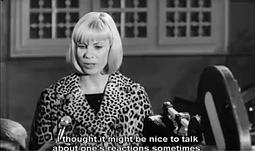
 Fig.2 Liz’s three speeches in The Girls: after the play, in front of the journalists and in her fantasy.
Fig.2 Liz’s three speeches in The Girls: after the play, in front of the journalists and in her fantasy.To some extent, Daisies is about the consequences of poor decision making whereas The Girls is a reflection on the feminist allegory. Daisies and The Girls both criticise consumerism with food but in differing ways. In The Girls, Gunila has an unpleasant flashback where she goes shopping and buys a cake. She is treated disrespectfully by a male clerk in shop and then children start to chase her, leaving her feeling helpless. She drops the cake she bought and runs away. Gunila does not push back against the clerk’s behaviour and fears the kids even as a mother of four children herself. In Daisies, the two girls eat, cut and spoil food, and burn things with joy. There behaviours show the girls’ liberation from consumerism using hyperbolic imagery. Lim describes them as being ‘awaken to revolt’against the worn out cliche that women are powerless and flimsy.
The relationship between the heroines and men in these two films are portrayed using different techniques. In Daisies, the two Maries belong to no-one, and they enjoy the game of manipulating men because of their inability to love. In other words, they also belong to everyone. They are portrayed as both consumers and destroyers of food, but in reality they represent the typical woman who has been objectified to the point where they are no different to a product that is consumed in the patriarchal society. Chytilová further highlights this from other details in the film such as when the two Maries soak themselves in the milk bath and when they get into the food elevator. In Daisies, the two Maries use destruction to justify their existence. Nobody cares them so they decide to destroy. The Girls is for the most part about the struggle of three heroines against the men in their lives. They are deeply bothered by the reality that people are indifferent towards them even though they are successful actresses. The girls in Daisies parallel the mistresses of Liz’s husband in her fantasy scene in The Girls. Liz’s husband takes his mistresses out from his case and undresses them on the bed as though they are dolls, whilst persuading Liz to sacrifice her career to support him. Thornburg points out that Liz’s husband wants to objectify Liz in the same manner as his mistresses: to achieve an ‘expansion of his own ego’.Clouzot states that the dominant trait of Daisies is its objective vision, which explains why Chytilová and Zetterling present the two Maries and the mistresses of Liz’s husband in a similar manner.

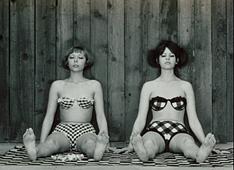 Fig. 3 Analogous characters in The Girls and Daisies: The mistresses of Liz’s husband and the two Maries are all like dolls.
Fig. 3 Analogous characters in The Girls and Daisies: The mistresses of Liz’s husband and the two Maries are all like dolls.The difference can also be seen from different character settings. In The Girls, the heroines’ conflict with the men in their lives is partly due to their successful jobs. However, in Daisies, the two girls never work but exist under an ‘economical parasitism’ . The three heroines in The Girls are middle-class white women who can be related to by the audience from their different conditions: Mariamne is a mistress, Liz has a cheating husband and Gunila is a mother who has a boring and irresponsible husband. In Daisies, the young and beautiful Maries are an extreme representation of every woman who has been objectified in their life.
Daisies and The Girls both operate within a double world structure but it presented to the viewer in different ways. The two worlds in Daisies, which are the realistic orderly world and the world of the two Maries’ abnormal behaviours, exist independently. The majority of Daisies is dominated by the second world. There are several parts of the film in which the two Maries encounter the real world. For example, in the nightclub scene, a female dancer becomes frozen with surprise upon viewing the two Maries’ farcical behaviour. One can assume that her reaction shows how she has become enlightened by the two Maries’ defiance against docility. In the countryside scene, the two Maries are passed by a group of workers who totally ignore them, which sparks Maries’ self-criticism about their decision to engage in this behaviour. Moreover, the dual protagonists are symbolic of the double world. The repeated use of symmetrical composition from the beginning correlates with the concept of double world. Daisies starts with the dual protagonists sitting on the ground and ends with them lying on the table after their punishment. Their rebellion is destined to fail because they are still stuck in the cage of patriarchal society. At the end of the film, their behaviour reverts to that of the stereotypical female, happy to be subservient in society. Their destruction can be interpreted as Chytilová’s criticism on objectifying women.
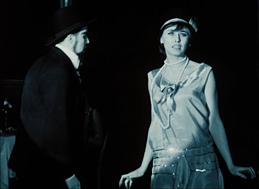
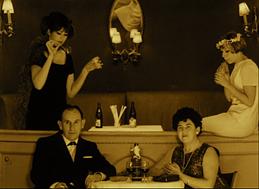 Fig. 4 The double world in Daisies: the female dancer is closely awakened by the two Maries’ unruly behaviour which shows an intrusion of th
Fig. 4 The double world in Daisies: the female dancer is closely awakened by the two Maries’ unruly behaviour which shows an intrusion of thIn The Girls, the double world becomes mixed up together as the three heroines’ theatre acting, real life and fantasy combine. The nightclub scene in The Girls is a fantasy in which Liz leads the women to use their initiative to put themselves under the male gaze by taking off their clothes in front of male onlookers. Only in the imaginary scenes do the women rebel bravely, which is similar to the behaviour of the girls in Daisies. Apart from this, the heroines are passive and oppressed in the real world. Their fantasies are more like daydreams, compared to the practical revolt that occurs in Daisies. The Girls ends in an ambiguous manner. Liz’s decision to get divorced is not shown explicitly but is replaced by the imagery of distorted figures dancing in the mirror, which may indicate an acknowledgement by Zitterling that the challenges faced by women in the real world are still difficult to conquer. As Zitterling admits that ‘a woman is emotionally formed by men and never quite breaks free from them, even if she would like to.’
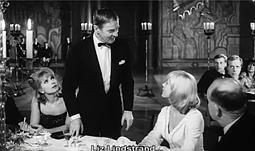
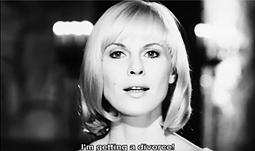 Fig. 5 The colour contrast change in the last scene of The Girls when Liz declares she is getting a divorce, which calls into question w
Fig. 5 The colour contrast change in the last scene of The Girls when Liz declares she is getting a divorce, which calls into question wThanks to the efforts of generations of feminists, women have made great progress in the pursuit of gender equality in the west. However, today’s world is still dominated by men, and women in developing countries are still facing similar problems to what were experienced by women in the developed world in the 1960s. Winkler describes the three main actresses in The Girls as having a real ‘sense of frustration with balancing or combining work and family’ in 1995. Women in the movie industry are still facing these same problems today. Chytilová has become renowned for her talent, skills and unique style. However, Zetterling cannot avoid being overshadowed by the more acclaimed Bergman as a director. Therefore, films like Daisies and The Girls are still hugely relevant as feminist allegories, not only because they show how women have awakened to reflect on their condition, but also to act as a benchmark when it comes to the representation of women in film today. Daisies and The Girls both have distinctive styles in presenting colours, sound and performance on screen. Chytilová tells the story of how women can be destroyed by objectification through an experimental comedy. Zetterling contrasts the reality and the political appeal of women who have become inspired by the play Lysistrata. They both reflect on the manner in which women have become objectified and go on to explore the real world demands of women. Although the five heroines in two films all fail in practicing, the double world in Daisies already interacts with each other and the three actresses in The Girls are awaken on the ideological level. These proclaimed feminist films will always inspire people to reflect and behave just as the female filmmakers had wished. Winkler highlights that Liz’s speech after her performance likely serves as Zetterling’s own views in regard to her film. These films shot from the woman’s perspective in 1960s deserve more notoriety as they are invaluable in showing the potential of women as independent human beings. As Winkler argues that ‘in spite of Bergman’s influence, The Girls is Zetterling’s own.’
Filmography
Bergman, Ingmar, Persona, 1966. Film. Swe: AB Svensk Filmindustri
Bergman, Ingmar, Scene from a Marriage/ Scener ur ett äktenskap, 1973. TV series. Swe: Sveriges Radio
Chytilová, Věra, Daisies/Sedmirkrásky. 1966. Film.
Zetterling, Mai. The Girls/Flickorna. 1968. Film. Swe: Sandrew Film & Teater
Bibliography
Anděl, Jaroslav, Alexandr Hackenschmied (Prague: Torst, 2000)
Clouzot, Claire, ‘Daisies by Věra Chytilová’ Film Quartly, Vol.21, No.3, 1968, pp. 35-37.
Hames, Peter, Czech and Slovak Cinema: Theme and Tradition (Traditions in World Cinema) (Edinburgh University Press, 2010)
Lim, Bliss Cua, ‘Dolls in Fragments: Daisies as Feminist Allegory’ Camera Obscura, Vol.16, No.2, 2001, pp. 1-77.
Sloan, Jane, ‘Making the Scene Together: Mai Zetterling’s Flikorna/The Girls(1968) and Aristophanes’s Lysistrata’, Quarterly Review of Film and Video, Vol.25, No.2, 2008, pp. 97-106
Thornburg, Linda, ‘Mai Zetterling: The Creation of a New Mythology’ Journal of the University Film Association, Vol. 26, No. 1/2, 1974, pp. 13-15.
Winkler, Martin M, Classical Literature on Screen: Affinities of Imagination (Cambridge Press, 2017)
Chytilová, Věra, Daisies/Sedmirkrásky. 1966. Film.
Zetterling, Mai. The Girls/Flickorna. 1968. Film. Swe: Sandrew Film & Teater
Thornburg, Linda, ‘Mai Zetterling: The Creation of a New Mythology’ Journal of the University Film Association, Vol. 26, No. 1/2, 1974, p. 13.
Lim, Bliss Cua, ‘Dolls in Fragments: Daisies as Feminist Allegory’ Camera Obscura, Vol.16, No.2, 2001, p. 38.
Thornburg, ‘Mai Zetterling: The Creation of a New Mythology’, p. 13.
Bergman, Ingmar, Persona, 1966. Film. Swe: AB Svensk Filmindustri
Bergman, Ingmar, Scene from a Marriage/ Scener ur ett äktenskap, 1973. TV series. Swe: Sveriges Radio
Hames, Peter, Czech and Slovak Cinema: Theme and Tradition (Traditions in World Cinema) (Edinburgh University Press, 2010), p. 152.
Anděl, Jaroslav, Alexandr Hackenschmied (Prague: Torst, 2000), p. 8.
Hames, Czech and Slovak Cinema: Theme and Tradition (Traditions in World Cinema), p. 154.
Sloan, Jane, ‘Making the Scene Together: Mai Zetterling’s Flikorna/The Girls(1968) and Aristophanes’s Lysistrata’, Quarterly Review of Film and Video, 25:2, 2008, p. 102.
Lim, Bliss Cua, ‘Dolls in Fragments: Daisies as Feminist Allegory’, p. 60.
Thornburg, ‘Mai Zetterling: The Creation of a New Mythology’, p. 15.
Clouzot, Claire, ‘Daisies by Věra Chytilová’ Film Quartly, Vol.21, No.3, 1968, p. 35.
Lim, Bliss Cua, ‘Dolls in Fragments: Daisies as Feminist Allegory’, p. 57.
Thornburg, quoted in Rosen, Marjorie, ‘Women, Their films and Their Festival’ Saturday Review (ed) ‘Mai Zetterling: The Creation of a New Mythology’, p. 15.
Winkler, Martin M, Classical Literature on Screen:Affinities of Imagination ( Cambridge Press, 2017), p.149.
Ibid. p.144.
Ibid. p.148.
